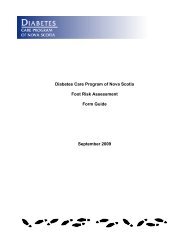CDE Appendix 1 Literature Review - Central East Local Health ...
CDE Appendix 1 Literature Review - Central East Local Health ...
CDE Appendix 1 Literature Review - Central East Local Health ...
You also want an ePaper? Increase the reach of your titles
YUMPU automatically turns print PDFs into web optimized ePapers that Google loves.
The Culture, Diversity and Equity Project: <strong>Literature</strong> <strong>Review</strong><br />
Strategic Options & Priorities<br />
Variations in policy justifications and objectives are (or should be) closely related to variations in the strategic<br />
options pursued by health policymakers. Mackenbach et al. (2002b) discern the two main lines of division in this<br />
respect as revolving around<br />
1. Entry points for intervention, namely upstream vs./and/or downstream intervention sites; and<br />
2. Universalist or Selectivist Approaches<br />
These are discussed below.<br />
I. Upstream' versus 'downstream' policy options<br />
<strong>Health</strong> equity (versus healthcare equity) approaches generally emphasize and aim for upstream solutions dealing<br />
with the fundamental causes of health inequalities beyond the healthcare system. Policy interventions concerned<br />
with equity exclusively in healthcare contexts are very much a downstream solution since they deal more with the<br />
effects of upstream determinants of health.<br />
Upstream solutions, “[b]y addressing the fundamental causes of inequalities in health…avoid<br />
the possibility that after one of the more immediate causes has been eliminated, other immediate causes take its<br />
place because the same fundamental causes are still in operation” (Mackenbach et al., 2002b). On the other hand, as<br />
earlier discussed, health policymakers have less direct leverage over such root causes of health disparities like socioeconomic<br />
distributions.<br />
Downstream solutions in healthcare services, contrastingly, are more within the direct control of health<br />
policymakers, and the effects of such policy interventions more easily lend themselves to measurement and<br />
documentation (Mackenbach et al., 2002b; Exworthy et al., 2006). On the other hand, Mackenbach et al., argue,<br />
such policy interventions “are usually expensive and can never totally eliminate the problem, because people<br />
will have to fall ill before extra healthcare can repair the damage” (2002b).<br />
Research consistently shows the relatively minor role played by health care in explaining health disparities.<br />
Exworthy et al. (2006) for instance cites research that attributes healthcare inequities as accounting for “perhaps<br />
only 10 percent to 15 percent of the variation in health outcomes among different groups” (see also Adler et al.,<br />
1993; McGinnis, Williams-Russo, and Knickman 2002). Downstream policy interventions in healthcare contexts<br />
thus hold out limited potential for fundamentally reducing health inequities.<br />
Between these two (downstream and upstream) policy options are ‘midstream’ interventions: “for example, reducing<br />
exposure to unfavourable specific material living conditions, psychosocial factors and behavioural risk factors in the<br />
lower socioeconomic groups” (Mackenbach et al., 2002b).<br />
Such policy interventions “combine some of the advantages and disadvantages of both upstream and<br />
downstream solutions: the leverage and decision-making power of health policy-makers may be limited, but the<br />
health effects of changing the socioeconomic distribution of some of the more powerful determinants, such as<br />
smoking and work environment, can be expected to be substantial” (p.36).<br />
Both Mackenbach et al. (2002b) and Exworthy et al. (2006) ultimately recommend a combination of upstream,<br />
midstream and downstream policy interventions (i.e. an ‘all stream’ solution).<br />
60

















